by Todd Walker
Need another DiY fix? Stay tuned, I’m fixin’ to give you one!
Wouldn’t it be great to have an all-purpose, all-natural, miracle substance that, when applied, fixes most stuff?
Stuff that would fix chapped lips, busted knuckles, ax-heads, wooden tool handles, bow strings, a squeaky hinge, wooden spoons, leaky tents, rusty metal, leather sheaths, and… be edible!
First, for those unfamiliar with Southern speak…
Fixin’ means:
- About to do stuff or in the process of doing stuff – replacing such worn expressions as ‘about to”, ‘going to’, ‘preparing for’, etc. Examples: “I’m fixin’ to cook dinner.” Or, “I’m fixin’ to go fishing.”
- An accompanying food dish to round out a meal. Example: “Grandma made Thanksgiving dinner with all the fixins.
- The process of repairing stuff. Example: “The fence needs fixin’.”
Then there’s the simple, multi-functional stuff called fixin’ wax. It’s also an edible emergency lamp fuel (replace the olive oil with fixin’ wax).
Ingredients for Fixin’ Wax
- 2 parts tallow – click here to make your own
- 1 part bees wax
- shea butter (optional) – 1 tablespoon
- essential oil (optional) – a few drops
Fixin’ Wax Procedures
The ratio of tallow to bees wax is 2:1. In hotter climates, you may want to make it half and half to keep a more solid consistency.
Step 1: Melt the tallow and bees wax together in a container. Remove from heat and stir occasionally while it cools to ensure these two ingredients combine.
If you choose to add the optional stuff (shea butter and essential oil), do so while over the heat. For a pine scent, add chopped pine needles and strain the liquid through a clean cloth to remove the needles from the liquid wax.
Step 2: Line your mold(s) with wax butcher paper. I used the press n seal wrap in my tins. Wax paper would work better as the thinner press n seal wrap made removing the fixin’ wax from the tins more challenging. Live and learn. I had to use a butter knife to pry the product out. Not a problem.
The benefit of using the sticky press n seal stuff was that it formed to the tin and produced beautiful, tin-shaped fixin’ wax! I’m guessing you could use a muffin tin for larger batches. Maybe insert cupcake liners in the individual forms for easy removal when the fixin’ wax sets.
Step 3: While liquified, carefully pour the stuff into your mold. The half-pint jar filled one and one half tins.
Step 4: Allow a few hours for the fixin’ wax to cool and set. Once solid, rub it with your finger. You should get a film on your finger tip. Apply it to your lips so you don’t waste any. I used a few drops of peppermint essential oil. I like the cooling effect on my skin.
Step 5: Remove from the form. Wrap the fixin’ wax in butcher paper – wax side touching the fixin’ wax. I placed the partial block back in the Altoids tin for use around the house.
For my bushcraft kit, I wrapped the full block in wax paper, placed in a brown paper lunch bag, and tied it up with a length of jute twine. This gives me an excellent emergency fire starter – jute twine, brown paper, and fixin’ wax are known to burn well.
Wrap it up and give it as a gift to someone for their bug out bag.
Here’s an old leather screw driver pouch I repurposed for my Bacho Laplander folding saw sheath. It needed some fixin’ wax love.
Rub the bar of fixin’ wax all over the surface and massage in with a cloth. Rejuvenating and sealing leather and dried wood is easy and effective with fixin’ wax.
Do you have a recipe or other uses for this amazing fixin’ wax? Drop us a line in the comments.
Keep Doing the Stuff… with Fixin’ Wax,
Todd
P.S. – You can also keep up with the Stuff we’re Doing on Twitter, Pinterest, Google +, YouTube, Instagram, and Facebook… and over at the Doing the Stuff Network.
P.P.S – If you find value in our blog, Dirt Road Girl and I would appreciate your vote on Top Prepper Sites! You can vote daily by clicking here or on the image below. Check out all the other value-adding sites while you’re there…
Thanks for Sharing the Stuff!
Copyright: Content on this site (unless the work of a third-party) may be shared freely in digital form, in part or whole, for non-commercial use with a link back to this site crediting the author. All links in articles must remain intact as originally posted in order to be republished. If you are interested a third-party article, please contact the author directly for republishing information.
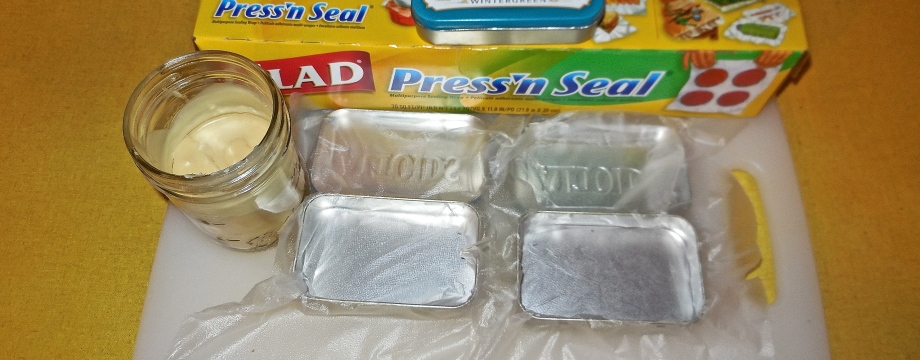
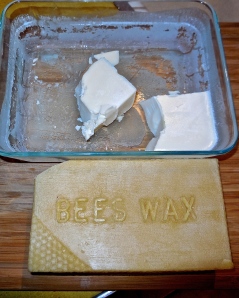

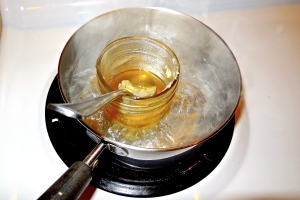
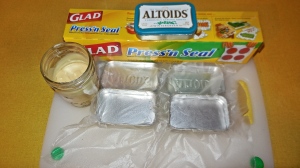
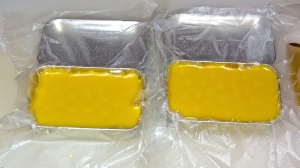
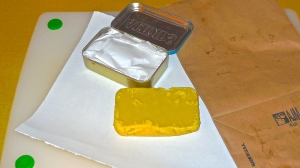
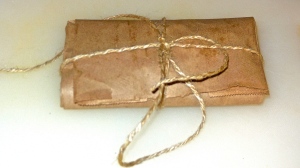

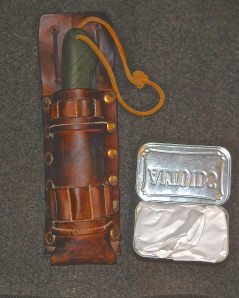








It’s really good to know what is in the products we use in our households. My husband used a commercial oil vanish to refinish the kitchen floor. Nearly, poisoned me! I had to leave the house. To solve the problem he taped off the kitchen and set up the stove fan as an extracted fan. He turned on a portable heated to speed up the process.
LikeLike
I know you’re sensitive to chemical scents and smells, Caroline. We’re fortunate to not be but try to use as little chemical cleaning solutions as possible.
LikeLike
Awesome idea, making this today. Thank you for sharing.
LikeLike
Hope it turns okay, Nate. Looking forward to your results.
LikeLike
Pingback: Julie's Weekly Roundup 3.1.14 - Home Ready Home
Pingback: 14 DiY Projects for Wilderness Self-Reliance | Survival Sherpa
I’m from Tennessee. I received a B student teaching for saying ‘fixin’ and have never used it again.
Asshole for a student teacher director.
LikeLike
WHAT! What part of TN did this occur? I ran a camp in E. Tennessee in the early 80’s and I don’t think the proper word for fixin’ was ever used all summer. 🙂
You must have had an transplant as a supervisor. Take your B and be proud of it, J! Thanks for sharing!
LikeLike
Pingback: 14 DiY Projects for Wilderness Self-Reliance | The Daily Sheeple
This is essentially like the hard lotion bars and lip balm that I make. I use coconut oil where you use beef tallow. To me, it seems that coconut oil is a better choice if you have it available to you. Beef tallow, even filtered well, goes rancid pretty quickly at room or warmer temperatures. It would still work for many purposes, but wouldn’t want to put it on my skin or eat it.
LikeLike
Actually, properly rendered tallow and lard is what was used by our pioneer ancestors to preserve meats. It’s so much better for you skin than even coconut oil.
As far as eating tallow from grass-fed beef, don’t fall for the big FAT lie sprung on the American public. I eat 50-60% fat intake in my diet. Fat is not what’s making us fat.
Thanks for the comment!
LikeLike
Amen. Fat is what gives food much of its flavor, and is necessary for life. People who have tried to survive in the wild without fat in their diet have died. Pemmican, a good survival food, requires fat. Trying to eat without fat and without _some_ carbs will make you sick in short order.
LikeLike
There are so many modern day myths about fat. Our bodies are built for it! Thanks for the comment, RegT!
LikeLike
Pingback: Born Again Tools: Giving New Life to an Old Ax | Survival Sherpa
Pingback: Born Again Tools: Giving New Life to an Old Ax | The Daily Sheeple
Pingback: Born Again Tools: Giving New Life to an Old Ax | Patriot Rising
I use this all the time. In addition to the uses you mentioned I use it on my kids a lot for bites, itches and hair pomade (which is ridiculously expensive at the store).
LikeLike
Pingback: Spoon Carving with an Ax | Survival Sherpa
Pingback: Spoon Carving with an Ax | TheSurvivalPlaceBlog
Pingback: 49 Outdoor Skills and Projects to Try When Camping | Survival Sherpa
Pingback: Vital Outdoor Skills | Michigan Standard
Works well to maintain blued rifles, pistols, and knives. Will also lubricate weapon actions. Thanks for the info you share.
LikeLike
Pingback: Made by Hands: Make it or Buy it? | Survival Sherpa
Wonderin if lard can be used instead of tallow as I have a bucket of lard but will have to go buy tallow? Thanks for posting all this good info!
LikeLike
Never tried lard but it has been used as a preservative for hundreds of years so it should work. Let us know how it works for you.
Thank you for the question and your support!
LikeLike
Just mixed up a batch of 1 to 1 lard and beeswax. Seems to work fine as mustache wax. 😉 I’ve been using a mix of petrolium jelly and beeswax for several years for my mustache so will be interesting to see how well the lard works long term. I’m hoping this mix will work as a seasioning mix for cast iron pans also. I’ve used a product called Crisbe which seems to be a mix of Crisco and bees wax that does a fantastic job of seasoning cast iron and steel pans, hoping the lard/beeswax will work as good. Melted the mix in an unseasoned skillet and after pouring the fixin wax off put the pan back on the flames and rubbed several coats into it, letting each harden and smoke a bit, till it had a nice smooth coating inside. Will try cooking in it later on tonight and let you know how it works out.
Dave
LikeLike
Please let me know how it seasons the pan. I’ve got to season a metal pan for camping and want to try this based on your results.
My beard is a beast and needs taming. Fixin wax may be the best thing for this thing.
LikeLike
I’d use lard instead of beef tallow myself…in fact I do when I make moc/gun/lip grease – beeswax and lard is the basic recipe. Either hard or soft, depending on my intended use.
LikeLike
Seasoned it quite nicely! Cooked sausage and then fried eggs in it, then cleaned up with a paper towel and a bit of water.
I’ve got an old beat up steel skillet that I used the Crisbe on that cooks great without sticking. We used it at a powwow 2 weekends ago and all it needed to be ready to cook in again was to be wiped out after using. Love the surface the beeswax/lard/shortening leaves in the pans! Much better than when seasoned with oil/shortening/lard alone.
Re. beard – mine is about 15 to 16 inches long as measured from the tip of the chin, about 2.5 years without trimming, so it stays braided or in hair ties most of the time. Had wondered how bear grease would work for taming it, but as I haven’t seen one around here lately, think I’ll try the fixin wax too. 😉
Dave
LikeLike
Pingback: The Beginner’s Step by Step Guide to Bow Drill Fire Craft | Survival Sherpa
Pingback: 39 Manly Uses for Coconut Oil in Your Bushcraft Kit | Survival Sherpa
What does the tallow do, because I’ve seen many other recipes that don’t need tallow.
LikeLike
I use tallow in my fixin wax because it’s also good for my skin conditions. Hope this helps.
LikeLike
Pingback: Waterproofing | tennesseewoodsman
I just did a batch of this today with some peppermint essential oil and shea butter; very nice and great recipe so far. Excited to get to use it during this winter on hikes and in the months to come. Do you know or have any idea, in general, how long would a batch of this fixin’ wax last? Thanks for the recipe and great site.
– 6 Slash, AT Thru Hiker 2014
LikeLike
Good job! It totally depends on how often you use yours. I’ve still got my original bar of fixin’ wax in my bushcraft kit. What, that was about 2 years ago. I use it on equipment in the field and it has lasted quite well.
Glad you found us and hope to stay connected!
LikeLike
Awesome to hear and thanks for all the bushcrafting work and information. Have you had any issue with the wax potentially spoiling? Since you’re not storing it in the frig or freezer I am wondering if there is any good way to keep and preserve it. I currently have mine stored in waxed butcher paper and inside a tin. In the tin I also plan to keep extra char cloth (charred and non), extra ferro rod and twine. The tin itself is perfect for charring the material as well.
LikeLike
In your Fixin Wax recipe you talk “Parts” . If I use 1 tablespoon of Shea Butter is a “Part” also 1 tablespoon? What is a “Part”. I asked my wife who is a Chef and she didn’t understand either.
LikeLike
Sorry about the confusion, Lee. Part could be a cup or teaspoon or any amount you have and want to use. 2 Parts tallow to 1 part bees wax means twice the amount of tallow to bees wax, or a ratio of 2:1. Hope that helps.
LikeLike
2:1 ratio by volume, correct?
LikeLike
Not bad for greasing your patches for your muzzleloader, either.
LikeLike
My son and I experimented with your recipe today. Instead of tallow, I used two parts (2 oz.) coconut oil (per your CO post) and one part (1 oz.) beeswax. Once those ingredients were liquefied together, I mixed in 6 drops of Tea Tree Oil. I meant to add five, but the 6th one got away from me. We poured it directly into a round 4 oz. tin with a screw-on lid, because I had no intention of ever removing the wax from the tin. I set the tin on a salad plate and surrounded the tin with ice cubes to help it set up. It turned out fantastic! We used it right away on chapped lips, my son’s sunburned arms, and to burnish the edges of a leather sheath. I plan to put this concoction through its paces, and I’ll let you know what the results are.
LikeLike
Awesome! Glad to hear it worked out for y’all. I’ll be watching for more updates.
Keep Doing the Stuff and fixin’ stuff!
LikeLike
Thank you for the write-up. When I want to treat my leather goods, I heat up the item by leaving in full day time sun. When I spread the treatment on the surfaces and (especially) seams, it seems to soak in more completely. Thanks again for the information.
LikeLike
My pleasure. Works great as a seam sealer.
LikeLike
Pingback: The Authentic Lumber Sexual Guide to Ax Work | Survival Sherpa
Pingback: A Beginner’s Guide to Knife Craft for Kids | Survival Sherpa
Pingback: Scary Sharp: Rooster’s Foolproof Ax Sharpening Method | Survival Sherpa
Pingback: Scary Sharp: Rooster’s Foolproof Ax Sharpening Method | Prepper Tips
Hello,
Just made some beef, bone marrow soup the other day,
and after sitting in the fridge over night, there was a 1/4″ of
fat, floating on top. Would this fat, be good to mix with the
beeswax for fixin’ wax? Is really necessary to strain it,since
it looks fairly pure?
LikeLike
Chilled, it just floated to the top like a disk, right? Never tried it but it is a good fat. Let me know if it turns out for you. Thanks, Walt.
LikeLike
Just ran up on your site. Good info. I’d recommend adding a few drops of camphor oil to the fixin’ wax. It’s a natural antiseptic that is useful for treating chapped lips and cold sores. It also has anesthetic qualities that soothe sunburned or wind burned skin. And, hopefully none of us will ever need this, it is useful in killing/removing lice. A few deep whiffs of the camphorated wax will clear stuffy noses. Rubbed on tool handles or leather goods, besides beautifully conditioning the wood or leather, it will discourage chewing by rodents or insects who are attracted to the salt from our sweaty hands in the wood or leather. Just having it in your pack or kit will discourage most critters of the six or two legged variety. And, best of all, it’s a fairly effective and safe insect repellent. Rubbed into hat bands, boot collars, bug nets, or even directly on your skin, it will keep most biting insects and ticks at bay. It’s not perfect, but, take it from someone who spends a lot of time in the Everglades, every little bit helps. My only other advice would be to adjust the recipe to your local climate and season. This far south, I use twice as much beeswax as fat (I use coconut oil because I have a boatload of them in my yard and it’s fun to make my own) because the heat here will keep the “fixin’ wax” pretty soft all the time. Keep up the good work. I’m so glad I found your website.
LikeLiked by 1 person